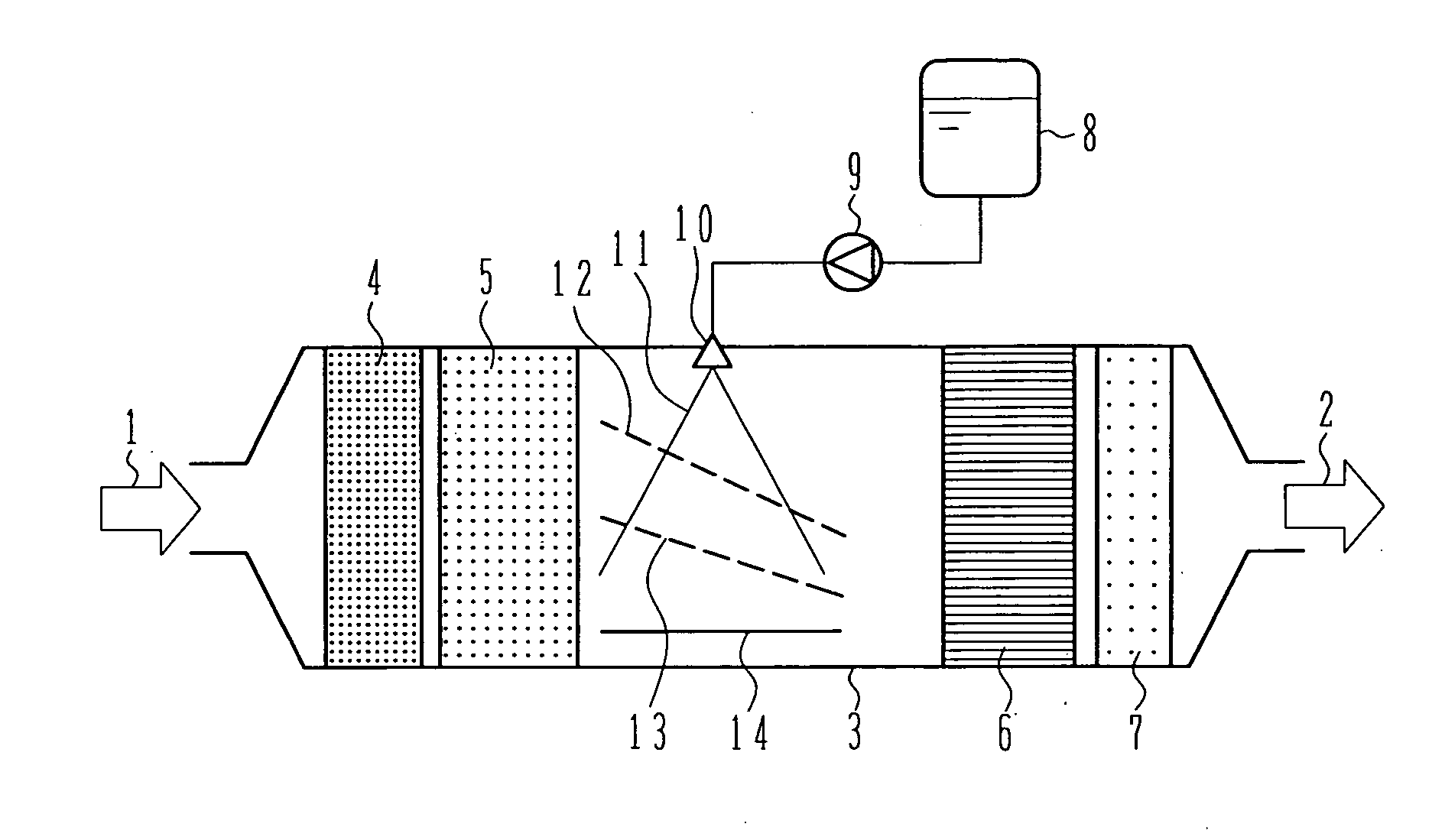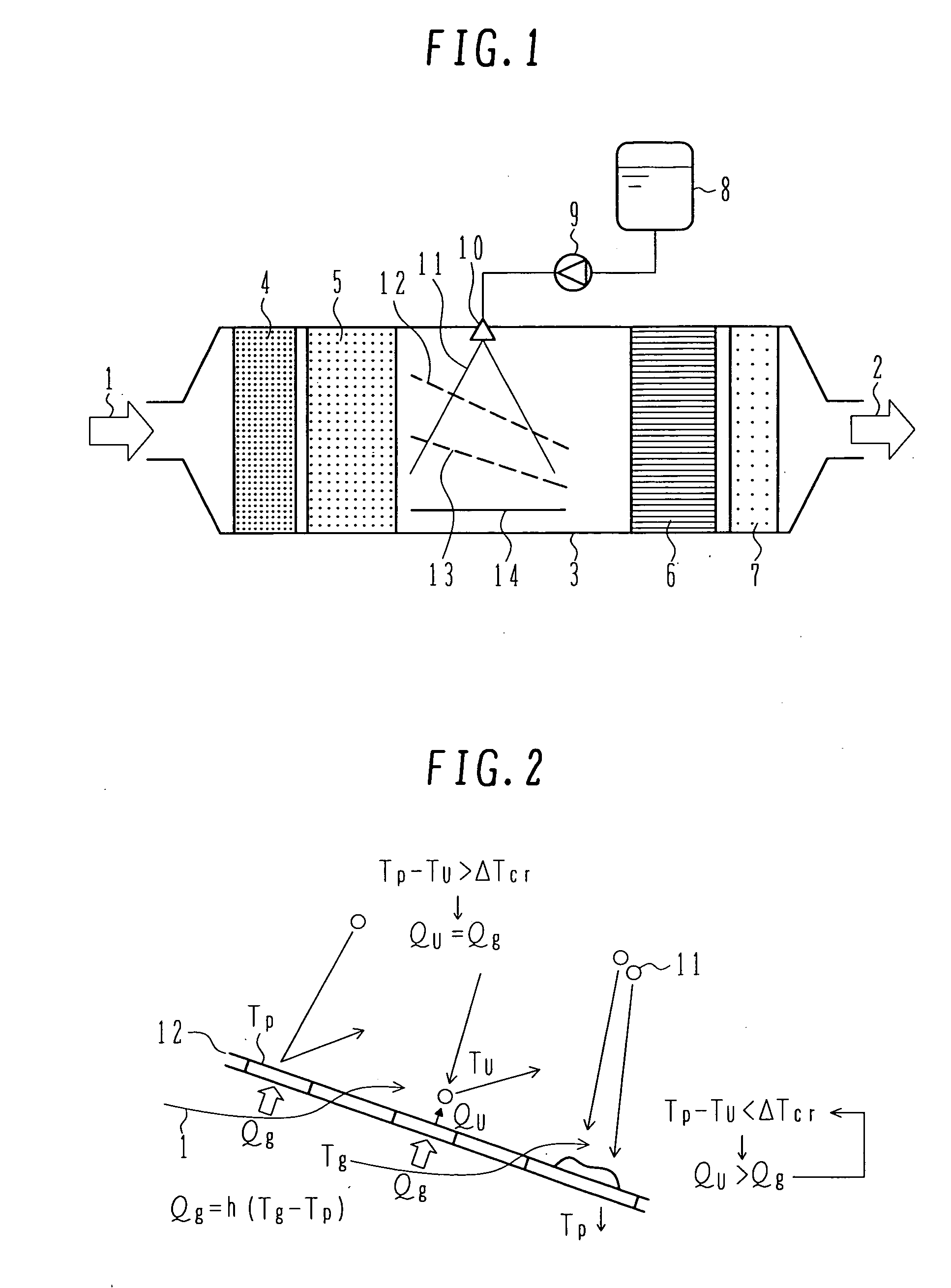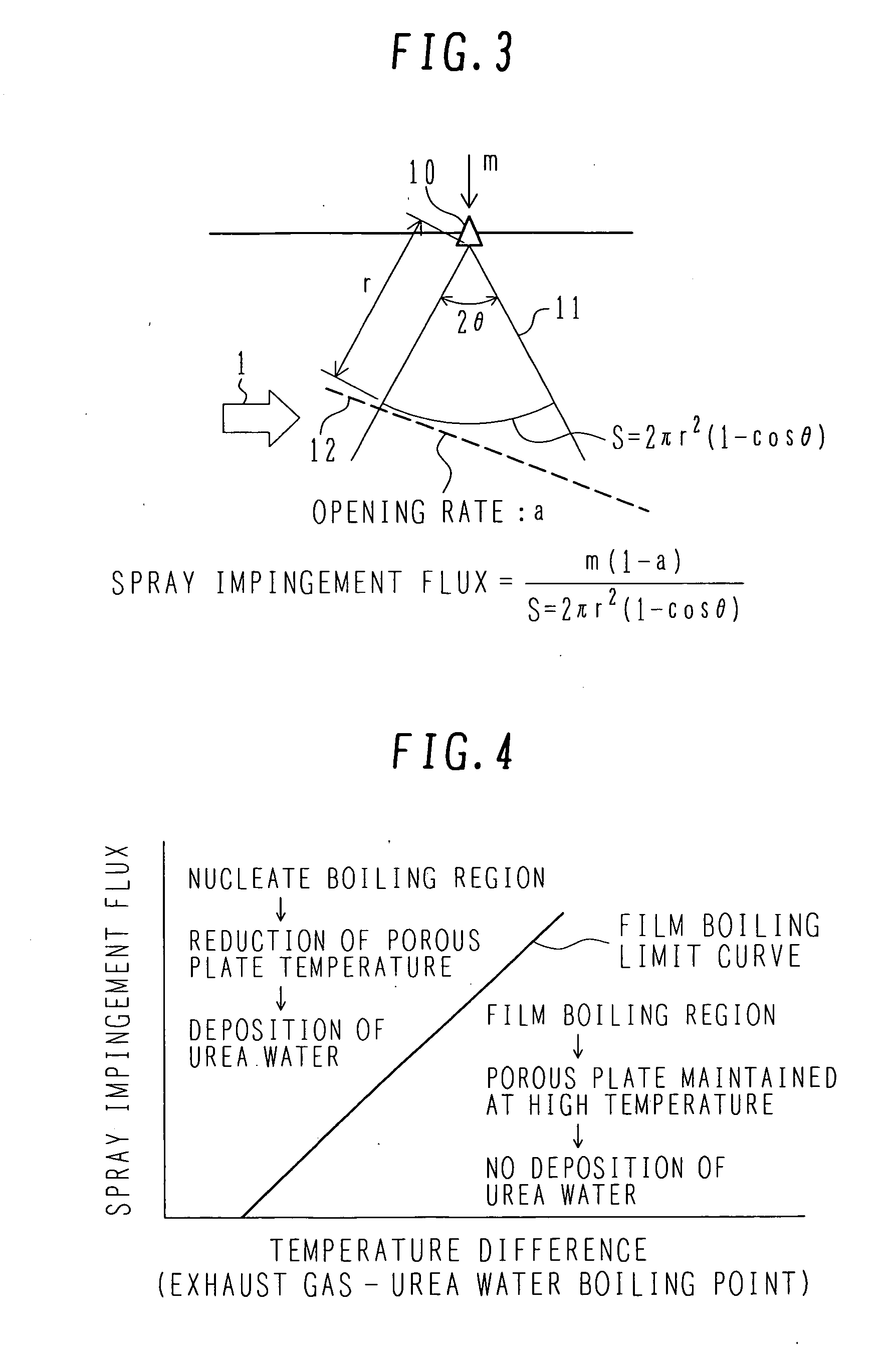Exhaust aftertreatment system using urea water
a technology of exhaust gas and aftertreatment system, which is applied in the direction of machines/engines, separation processes, lighting and heating apparatus, etc., can solve the problems of increasing the oxygen density of the exhaust gas, increasing the pressure loss, and causing energy loss, so as to prevent the deposition of urea water and reduce the reaction
- Summary
- Abstract
- Description
- Claims
- Application Information
AI Technical Summary
Benefits of technology
Problems solved by technology
Method used
Image
Examples
first embodiment
[0039] The exhaust aftertreatment systems according to the first embodiment of the present invention will be described below with reference to FIGS. 1-4. FIG. 1 is a schematic view showing the overall construction of the exhaust aftertreatment system according to the first embodiment of the present invention. FIG. 2 is an illustration for explaining a mechanism for preventing deposition of droplets of urea water when the urea water droplets impinge against a porous plate disposed in an exhaust duct in this embodiment. FIG. 3 is an illustration for explaining spray impingement flux of urea water spray, which is decided depending on the positional relationship between a urea water injector and the porous plate in this embodiment. FIG. 4 is a graph for explaining, based on the relationship between the spray impingement flux and the temperature of exhaust gas, phenomena occurred when the urea water spray impinges against the porous plate in this embodiment.
[0040] In the overall constru...
second embodiment
[0085]FIG. 5 is a schematic view showing the construction of a urea water dosing section in an exhaust aftertreatment system according to a second embodiment of the present invention. Components and members having the same functions as those in the first embodiment are denoted by the same reference numerals, and a description thereof is omitted here. Since the structures upstream of the filter 5 and downstream of the denitration catalyst 6 are the same as those in the first embodiment, those structures are omitted in FIG. 5.
[0086] In the second embodiment, the direction of injection from a urea water injector 21 is inclined toward the downstream side away from the vertical direction with respect to the flow of the exhaust gas. Such an arrangement can decrease a part of a spray 22 formed by the injection, which reaches the upstream side of the injection point with respect to the flow of the exhaust gas, and can prevent the spray from splashing the filter 5 even when the distance bet...
third embodiment
[0088]FIG. 6 is a schematic view showing the construction of a urea water dosing section in an exhaust aftertreatment system according to a third embodiment of the present invention. Components and members having the same functions as those in the first embodiment are denoted by the same reference numerals, and a description thereof is omitted here. Since the structures upstream of the filter 5 and downstream of the denitration catalyst 6 are the same as those in the first embodiment, those structures are omitted in FIG. 6.
[0089] In the third embodiment, the direction of injection from a urea water injector 30 is inclined toward the upstream side away from the vertical direction with respect to the flow of the exhaust gas. Plates 37, 38, 39 and 40 are arranged for impingement of a spray 36 injected from the injector 30, to thereby prevent the spray 36 from reaching the filter 5 disposed in the upstream side. Also, a plate 14 is disposed to prevent the spray 35 from depositing on th...
PUM
| Property | Measurement | Unit |
|---|---|---|
| molar ratio | aaaaa | aaaaa |
| molar ratio | aaaaa | aaaaa |
| unit time | aaaaa | aaaaa |
Abstract
Description
Claims
Application Information
 Login to View More
Login to View More - R&D
- Intellectual Property
- Life Sciences
- Materials
- Tech Scout
- Unparalleled Data Quality
- Higher Quality Content
- 60% Fewer Hallucinations
Browse by: Latest US Patents, China's latest patents, Technical Efficacy Thesaurus, Application Domain, Technology Topic, Popular Technical Reports.
© 2025 PatSnap. All rights reserved.Legal|Privacy policy|Modern Slavery Act Transparency Statement|Sitemap|About US| Contact US: help@patsnap.com



